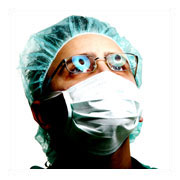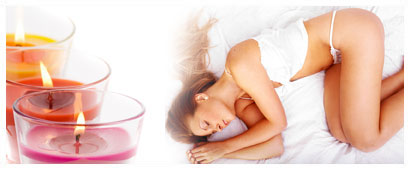Initial Breast Reduction Surgery Recovery: Anesthesia
|
After you are awakened and brought into the recovery room after your breast lift, the recovery nurse will monitor your vital signs until you are ready to be released. This could take up to 2 hours or more. You will feel quite tender and possibly confused as the anesthesia wears off. If you feel any discomfort you may want to ask for a pain reliever, which you were probably asked to bring with you. You may feel emotional or upset, experience rigors or shivering – all normal reactions to anesthesia and surgery. The fact that the operating room is usually very chilly surely does not help matters in this regard. The recovery nurse usually has wrapped you in a warm blanket, but if not, request one.It certainly makes things more tolerable.You may even be lucky enough to have heating lamps! |
 |
Some patients feel nothing different than waking up from a good night's rest. If you have had general anesthesia, you may feel a little sick. Hopefully your surgeon prescribed something to lessen this. Your prescribed medication should alleviate any pain or discomfort. However, if you believe your pain to be out of the ordinary once you get home, call your surgeon or the on-call staff immediately. Your spouse, significant other or friend will drive you home because you will not be allowed to do so.
Drains
A drain may be inserted to allow the fluids to leave the incision sites or the bottom-most portion of the treatment area. This is a clear plastic tube with one end under your incision and the other leading to a plastic bulb that collects fluid. A drain prevents fluids from building up pressure behind your incision. You will be swollen and bruised and more than likely wearing a type of compression garment or surgical bra with elastic bandages binding your breasts to your chest. This may cause you some discomfort but it is very important not to touch or mess with it unless you are instructed to empty the collection bulbs.
Your drains will more than likely be removed at your first follow-up appointment, which may be within a few days of surgery. Patients have described this removal as being pain-free and nothing to worry about, or odd-feeling. There may be a little irritation around the wound edges.
Incision Care
Please keep your incisions/suture line dry during your mastopexy recovery. Your surgeon may have placed Steri-Strips on top of your incision line and sutures, or you may have internal sutures and tissue glue to bind the external incision edges. Either way, your surgeon will give you specific care instructions at your preoperative appointment or send them home with you the day of your surgery. It is best to learn before so that your spouse, friend or caretaker will understand and assist you instead of having to learn the last minute. Also take care in not getting creams, lotions or topical arnica into the incision as they can cause inflammation.
Suture Removal
You will have your incision sites checked and your stitches removed in approximately 10 days after your breast lift. Suture removal may be painful, especially if the wound edges are snipped with the surgical scissors accidentally. It is generally a quick process and nothing to worry about, although there may be a tugging sensation or slight stinging associated with the removal process.
Monitor Your Temperature
Take your temperature regularly throughout your cosmetic surgery recovery. An elevated temperature could mean an infection. Take those antibiotics on time. Don't forget that some antibiotics can interfere with birth control pills, so be sure to use a back up form of protection.
Soreness and Pain Factor
Pain tolerances depend upon the individual, but you will feel tender, stiff and sore for a few days while you're recovering from your breast lift. More likely than not you will not want to move too much. This will subside. Be sure to take your medications and follow the precise instructions provided by your surgeon. There is no reason to suffer, so take your medications regularly instead of waiting to feel pain. The less pain you have, the better your experience, and the faster you will make a full recovery.
Swelling (Edema)
As with all surgeries, swelling will be an issue during breast lift recovery. Swelling is a normal reaction to an injury and is categorized as a natural inflammatory action. Fluids high in white blood cells and hemoglobin will accumulate at the treatment site to treat the injury. Swelling is not necessarily a bad thing; however, severe swelling can be a problem.
You may be swollen for up to 3 to 4 months, although this could be very slight and only noticed by you. Your breasts may be smaller than they were before and definitely higher, so you may not notice the swelling that much. Soreness may be more of an issue.
Treatment for prolonged edema includes increasing your fluid intake (preferably water), normal to low sodium intake, and regular light exercise (such as light walking). Diuretics are not advised and should be avoided unless specifically instructed. This includes natural diuretics as well.
Bruising
Bruises may or may not be present after your mastopexy. This depends entirely on the patient, the technique and the effectiveness of the epinephrine. On the bright side, bruises almost always get better with time. Ask your surgeon about Arnica Montana, bromelain or vitamins A and C to reduce swelling and discolorations and to improve healing. Warm, gentle compresses starting several days post-op can assist in bruise removal by dilating the superficial blood vessels to help the body remove blood and damaged tissue away from the treatment area.
Permanent bruising is a risk but very rare. If this is the case and you have discolorations after several months post-op, you may wish to seek Intense Pulsed Light treatments. These treatments target the hemoglobin in the blood that transports oxygen from the lungs to the tissues of the body. A highly advanced computer regulates the light pulse to a specific wavelength range, which in turn heats the visible, targeted blood vessel(s), damaging or otherwise destroying the targeted lesion while sparing the surrounding healthy or normal tissue. The penetration depth and degree of heat is highly controlled so complications are generally not an issue with Intense Pulsed Light Therapy.

Sleeping
Sleeping is going to be difficult at first. During your breast lift recover it is important to sleep with at least 2 to 3 fluffy pillows under your upper back and head to keep yourself elevated. This helps relieve pressure from your treatment area and reduces swelling and pain. Many patients opt to place a pillow under their knees to help keep from rolling over during the night. Some place pillows alongside them and create a sort of recovery nest.
Just be sure that you do get some sleep because your body can heal itself better while it is rested. Besides, sleeping is a good way to pass the time during recovery. Just be sure to have someone wake you up to take your meds, eat some healthy meals and drink your fluids.
Bathing
You will have to sponge bathe until your incisions are completely closed and your sutures are removed. You should wash your hair beforehand and either braid it or keep it back in a ponytail if it is long enough. This will keep your hair clean and out of the way when you are eating and taking medications, or if you get sick. You may not be able to wash your hair for a while because you won't be allowed to raise your hands above your head to do so. If you must wash your hair, please get a friend to assist you at the sink or with a hand held shower head. Or, if you wish, have your hairstylist wash your hair for you a week or more post-op.
Activity
Even though you may not feel like it, your surgeon will more than likely advise you to walk and move around as soon as you are able during recovery. Without light activity, you may develop clots or retain fluids longer. Once activity has returned to a regular level and you become more pleased with the results, you may want to consider other types of plastic surgery procedures. Some patients undergo combination procedures for body and breast surgery, but not in the same surgical session. Liposuction is a common body procedure performed with breast lift or augmentation. To learn more about liposuction and view liposuction photos, visit the Consumer Guide to Plastic Surgery. While on our sister site, also check out the information about tummy tuck and view the tummy tuck (abdominoplasty) gallery.
You will be instructed not to exercise or engage in strenuous activities for at least 3 to 4 weeks post-op. Raising your blood pressure can cause bleeding and you don't want that. Don't lift anything over 5 pounds, and try not to raise anything over your head until your surgeon releases you for activity. Taking your time in returning to everyday life will give you the best healing environment possible.
Scars and Keloid Prevention
For help with keloid prevention and scar flattening, some surgeons suggest silicone gel sheeting. There are products available that come in shapes generally used for breast lift patients that are suitable for common breast augmentation incisions as well. Or you may consider using silicone sheeting that comes in patches that you can cut to size. Gels like Mederma and Xeragel usually aren't as beneficial to scars that will be rubbed by clothing or other types of friction as they can rub off and don't offer the pressure that is beneficial to flattening. Ask your surgeon about using a combination of silicone gel (to keep your incisions soft and moisturized) and a piece of tacky silicone sheeting over it.
Please see our Scar Treatment Section for more information.
Numbness and Loss of Sensitivity
There may be some loss of sensation in the nipple or general breast area. This is usually caused by the swelling cutting off your nerves' ability to transmit pain or touch sensations. Numbness usually subsides within a few weeks, but be aware that in rare cases loss of sensation may be permanent. You may also experience sharp pains, burning sensations, heat, tingling, or prickling. The sensations are from function returning to nerves that were damaged during surgery.
Nipple Hypersensitivity
Many women complain of very erect and sensitive nipples after breast surgery. The nipples feel very sensitive when even your clothing rubs up against them. You can try using those round Band-Aids, corn pads or nursing pads to cover your nipples.
Breast Noises: Squeaks and Gurgles
If you have gotten breast implants, do not be alarmed if you hear gurgling, buzzing or crackling noises coming from them. This can be due to fluid build up or air bubbles within the implant pocket as well as the implant not being settled in. Give them a few weeks.
What Will My Breasts Look and Feel Like?
 As far as what they will first look like, your breasts may be, for lack of a better term, odd-looking. This applies whether you've had a breast lift or a lift with augmentation.
As far as what they will first look like, your breasts may be, for lack of a better term, odd-looking. This applies whether you've had a breast lift or a lift with augmentation.
You may think your breasts are too big, too small, too round, not round enough, too jellybean shaped, too square, too itchy, too high, too low, too ugly, too sensitive, too this and too that. This will pass. Keep in mind that your final results will take a while to emerge.
The firmness in your breasts is from the swelling, which is essentially fluid retention in your tissues. This is a natural reaction to a wound of any sort and your body's way of repairing itself. Cold compresses will significantly lessen the swelling, as will keeping your torso elevated.
If you received implants and they went under the muscle(s), the muscles will be traumatized and all knotted up causing an even firmer feel. It may take a while for the muscles to relax, especially on your dominant side. For example, if you are right-handed, your right breast may not fall as fast as your left one. Don't worry, though, it will, and if it doesn't your surgeon can correct it later on. If you had your implants overfilled, however, the resulting firmness will never go away. Give yourself time to heal and your new breasts time to settle in. Don't jump to conclusions just yet. Please be patient.
If you had a breast lift with no augmentation, the same rules apply. Your breasts will relax over time and look natural as you heal.
What to Look For & Do In the Event of a Complication
Printer Friendly Version
RECOMMENDED!
Please contact your surgeon or the on-call physician immediately if you notice any of the following:
-
bleeding from your suture lines
-
pus or cloudy discharge from your incision areas, nipples or elsewhere
-
a foul odor from your incision areas, nipples or elsewhere
-
uncontrollable pain
-
temperature over 100.5º F
-
inability to pass waste (both liquid and solid)
-
numbness of the legs (unless you had lipo as well)
-
uncontrollable dizziness not related to the pain relievers
-
deflation
-
Please contact your surgeon or the on-call physician and go to the emergency room as soon as possible if you notice any of the following:
-
passing blood through urine, feces or spitting up blood
-
abrupt and severe swelling and discoloration (aside from normal swelling)
-
blackening of the skin (which is clearly NOT a bruise)
-
uncontrollable vomiting
-
loss of consciousness not related to sedatives
-
temperature over 105º F
-
convulsions
-
What to do in case of a complication:
-
#1 STAY CALM
-
Have your emergency numbers handy and contact, or have your caretaker contact, your surgeon or the on-call physician to let them know of your problem as soon as you can.
-
If you are going to the emergency room, don't forget to tell your surgeon which hospital you are going to.
-
Bring all of your medications with you to the hospital.
-
It may be precautionary to pack an overnight bag ahead of time "just in case".
-
If you are able, keep a written journal (and if possible photos) of your symptoms and complaints.
-
Emergency Numbers:
Surgeon: ____________________________
Emergency On-call Physician: __________
Hospital: ___________________________
Pharmacy: _________________________
Parents: __________________________
Friend: ___________________________
Other: ___________________________
To learn about other surgical procedures, such as Intracor eye surgery for the correction of presbyopia (age-related farsightedness), visit Refractive Surgery News. RSN provides a comprehensive overview of the latest news and updates related to laser eye surgery, cataract surgery and presbyopia correction.
